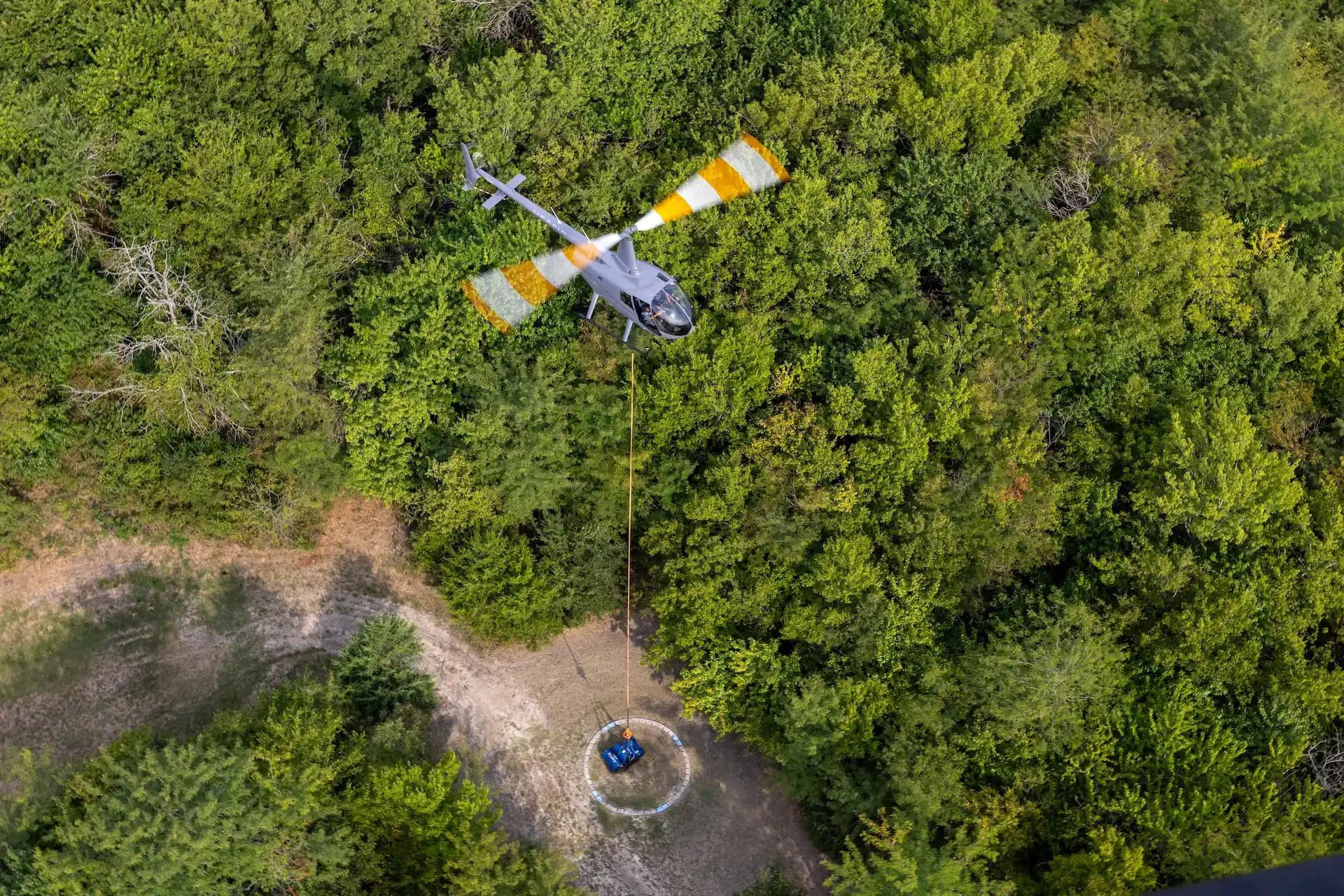In the specialized world of utility helicopter operations, there’s a growing gap in the number of pilots skilled in precision long-line and vertical reference flying. As older pilots retire, they leave behind a critical shortage of professionals ready to take on high-stakes missions like firefighting, heavy lifting, and precision placements. The demand for utility pilots capable of handling these roles is soaring, but the traditional paths to gaining such expertise—logging or working in high-tempo operations—are less accessible than they used to be. This leaves a critical training gap in the aviation industry that few institutions are equipped to fill.
That’s where Volo Mission steps in.
This Texas-based training organization has been redefining the standards for utility helicopter training for the past 10 years. Founded by Andre and Kim Hutchings, the training organization leverages decades of utility flying experience, and a deep understanding of the physiological and psychological considerations involved in aviation and learning. Culminating in an innovative training program to efficiently produce pilots capable of handling the demands of the utility industry.
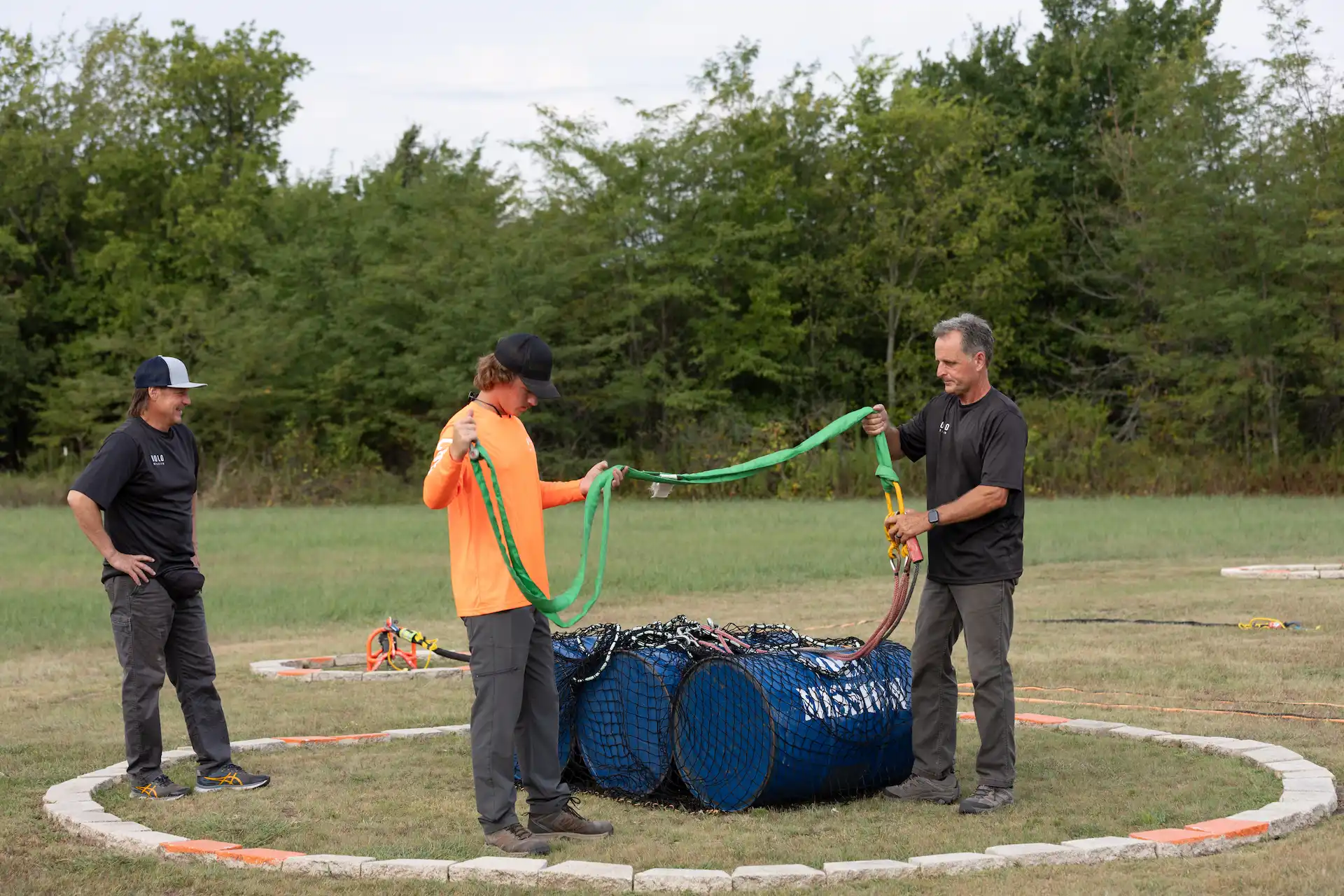
HeliOps recently visited “The Ranch,” in Campbell, Texas to learn more about the unique training environment and opportunities that the company provides, and witness first-hand how this dedicated program doesn’t just train pilots—it’s shaping the future of utility aviation.
A Critical Gap – The Growing Need for Utility Flying Expertise
Utility helicopter operations require pilots to perform with pinpoint precision while carrying external loads, often in extreme or unpredictable environments. Small mistakes can lead to significant consequences, both in terms of safety and operational success.
Across the industry, the demand for well-trained utility pilots is continually growing. Large-scale wildfires, disaster relief, and infrastructure projects create a constant need for helicopter pilots capable of executing precision work in challenging environments.
Yet, the path to becoming a utility pilot isn’t as straightforward as one might imagine.
Historically, many pilots gained their long-line skills through years of experience in logging, where high-frequency load placement helped hone precision over many hours of repetition. Over the years, these opportunities have decreased significantly, without these positions available to build foundational skills, many emerging pilots lack the depth of experience needed to transition into utility operations. As a result, many pilots and operators, find themselves searching for alternative paths to develop the foundations required by this uniquely demanding field.

Though many in the helicopter industry feel that younger pilots shouldn’t need to pay for specialized training, often - you get what you pay for. Even if a pilot can get a utility job that offers to provide them with experience, frequently, the amount of time they spend in the right seat waiting for flight training opportunities to build their experience is far longer than they imagined. This is especially true when many of the aircraft utilized cost several thousands of dollars per hour to operate. So, “on the job training” often devolves into infrequent opportunities which can take years to add up to any degree of proficiency when dealing with such perishable skills.
This is where Volo Mission fills a critical gap in the industry. Their programs are designed to provide pilots with a structured, replicable way to learn vertical reference and precision long-line techniques. Instead of relying on years in the field, new pilots can gain meaningful experience in a couple of weeks, entering the utility pilot workforce with the confidence and skills needed to handle the job safely and effectively.
"Utility flying isn’t just about moving a load; it’s about doing so with precision, safety, and efficiency. Our goal is to instill those principles in every pilot we train." Remarks one of the company’s Instructor Pilots, Greg Bettis, also Chief Pilot for Billings Flying Service on the CH-47.
The program bridges this gap by offering an accelerated, comprehensive curriculum dedicated to the utility mission. Pilots who complete the program find themselves equipped with the technical and mental skills to perform confidently in high-stakes vertical lift scenarios, making them valuable assets to employers. “We've had several students say, ‘I was told that if I come and get training here, I would get hired.’” States, Kim.
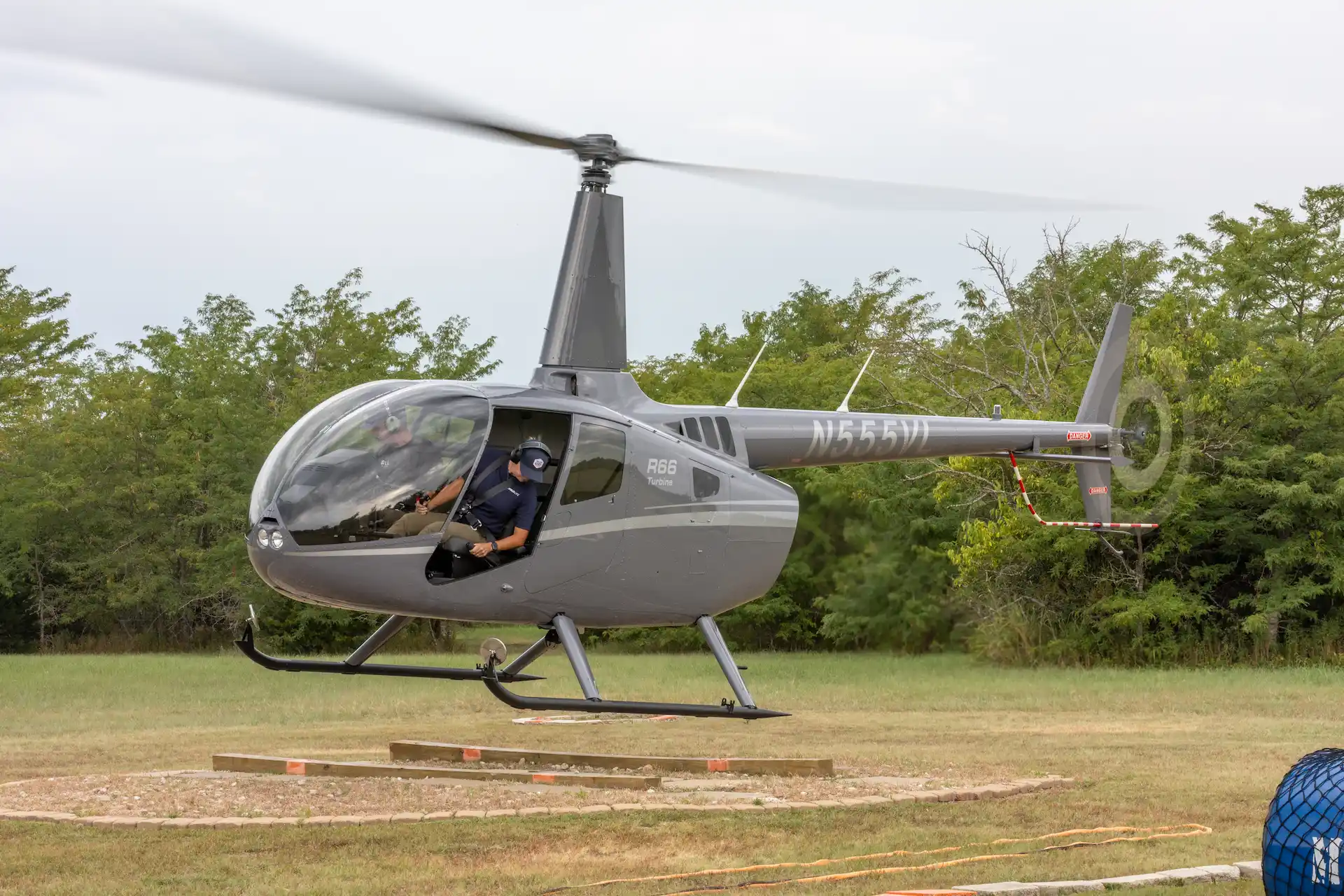
The program’s continued success is rooted in it’s holistic, ground up approach, and deliberate choices that have been made along the way to provide the student, and thus the industry, with the highest chances for safety and success.
A Deliberate Choice: Size Matters
A distinctive feature of this training program is its reliance on the Robinson R44 and, more recently, R66. While some might question the choice of these light aircraft for utility training, both models play a deliberate role in preparing pilots for the challenges of long-line operations.
The R44 is central to the curriculum due to its lightweight design and minimal power margins. This configuration forces pilots to focus on precise control inputs and efficient power management. As Andre explains: "The R44 makes you disciplined. It amplifies mistakes, which means pilots learn to be precise. Mastering long-line work in the R44 builds a foundation that transitions seamlessly to larger helicopters."
Kim Hutchings elaborates on the psychological benefits of starting in the R44:
"The challenge of flying such a responsive machine builds mental toughness. Pilots develop confidence and adaptability, traits that
are essential for real-world utility operations."
The R66 adds another dimension to the training. With more power and payload capacity than the R44, the R66 serves as a bridge to larger, turbine-powered helicopters commonly used in utility work. By introducing students to the differences in power management, control response, and external load dynamics, the R66 prepares them for the nuanced demands of operating more powerful and larger aircraft.

"The R66 is the perfect next step," Andre explains. "It has improved performance capabilities while still requiring the precision and finesse learned in the R44. This progression and experience ensures pilots can later handle a wide range of aircraft."
By strategically incorporating both the R44 and R66 into its curriculum, the students receive a comprehensive training foundation that prepares them for every stage of their utility flying careers. A foundation which is built using a ground-up approach.
Building Technical Mastery: A Ground-Up Approach
Technical mastery isn't just a goal; it’s the foundation of every aspect of the company’s curriculum. Their training programs, ranging from introductory to advanced courses, are designed to take students through a step-by-step progression of skills, each building on the last. The result is training pilots who are not only technically proficient but capable of executing precise complex maneuvers in a variety of environments with confidence.
The curriculum starts long before students take to the skies. Ground training is a critical component, introducing pilots to load dynamics, rigging techniques, and safety protocols specific to utility operations, including emergency procedures. This ensures they have a solid theoretical base for this type of flying even before stepping into the cockpit. By developing a solid understanding of how loads behave in response to environmental factors like wind, turbulence and even gravity, pilots become knowledgeable applying that knowledge to their decisions.
Once airborne, initial flights focus on basic helicopter handling and hover precision. Students learn to maintain steady control under varying conditions, setting the stage for their external load operations. "You can’t expect someone to master long-line flying if they haven’t first nailed the basics," explains Andre. "It’s about building confidence and muscle memory one step at a time." Then, the focus shifts to vertical reference flying—a technique requiring pilots to shift their gaze from the horizon to the load below. This fundamental skill is essential for long-line operations but is a significant adjustment for many aviators.
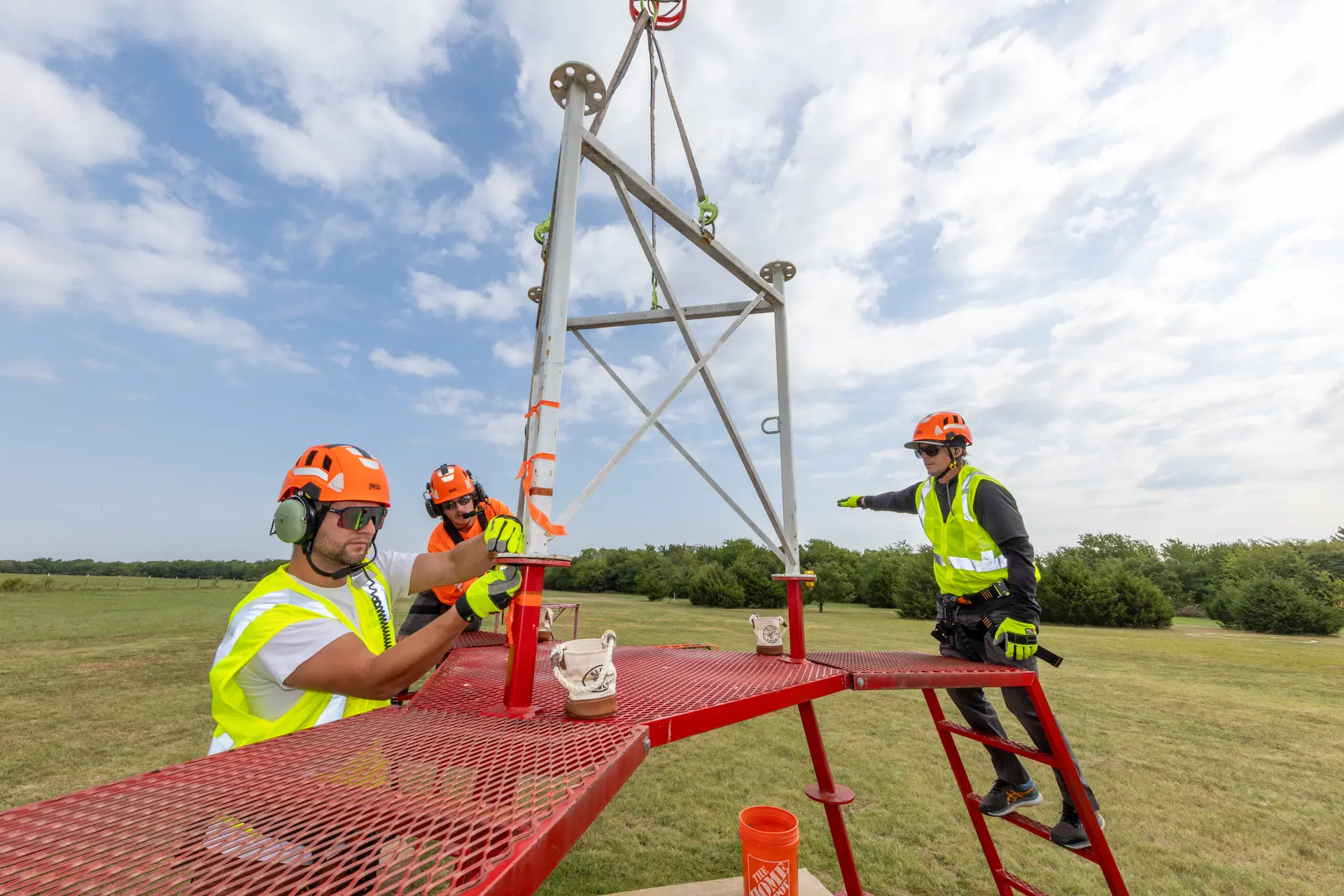
Greg Bettis recalls his own early challenges with vertical reference flying. "At first, it feels completely unnatural. You’re asking your brain to let go of its reliance on the horizon and focus entirely on what’s happening beneath the helicopter. It’s a skill that demands patience and practice."
From there, the focus shifts to sling load work. This phase introduces students to managing external loads attached to a longline. Pilots practice picking up and placing loads with pinpoint accuracy, gradually increasing the complexity of the maneuvers. The culmination of this phase is longline training, where the line extends up to 200ft below the aircraft, requiring even greater spatial awareness.
Kim highlights the psychological aspect of this phase. "Longline flying isn’t just a physical skill—it’s mental. You’re managing the aircraft, the load, and the environment all at once. We teach pilots to remain aware and stay calm under pressure."
The advanced stages of training integrate all these elements into real-world scenarios. Student pilots work through exercises that simulate real-world scenarios, such as placing loads on confined pads, high-altitude operations, and complex configurations, managing firefighting buckets, or navigating turbulent air. These training exercises simulate the challenges they’ll face in utility operations, ensuring that by the time they graduate, pilots can handle these challenges with confidence and precision.
The Course Structure
Courses are tailored to the needs of individual students, with the full training program typically spanning two to three weeks and giving the students about 20 hours of experience in this type of flying. The length of the course allows ample time for repetition and refinement, which are critical for developing the muscle memory and decision-making skills essential to utility flying.
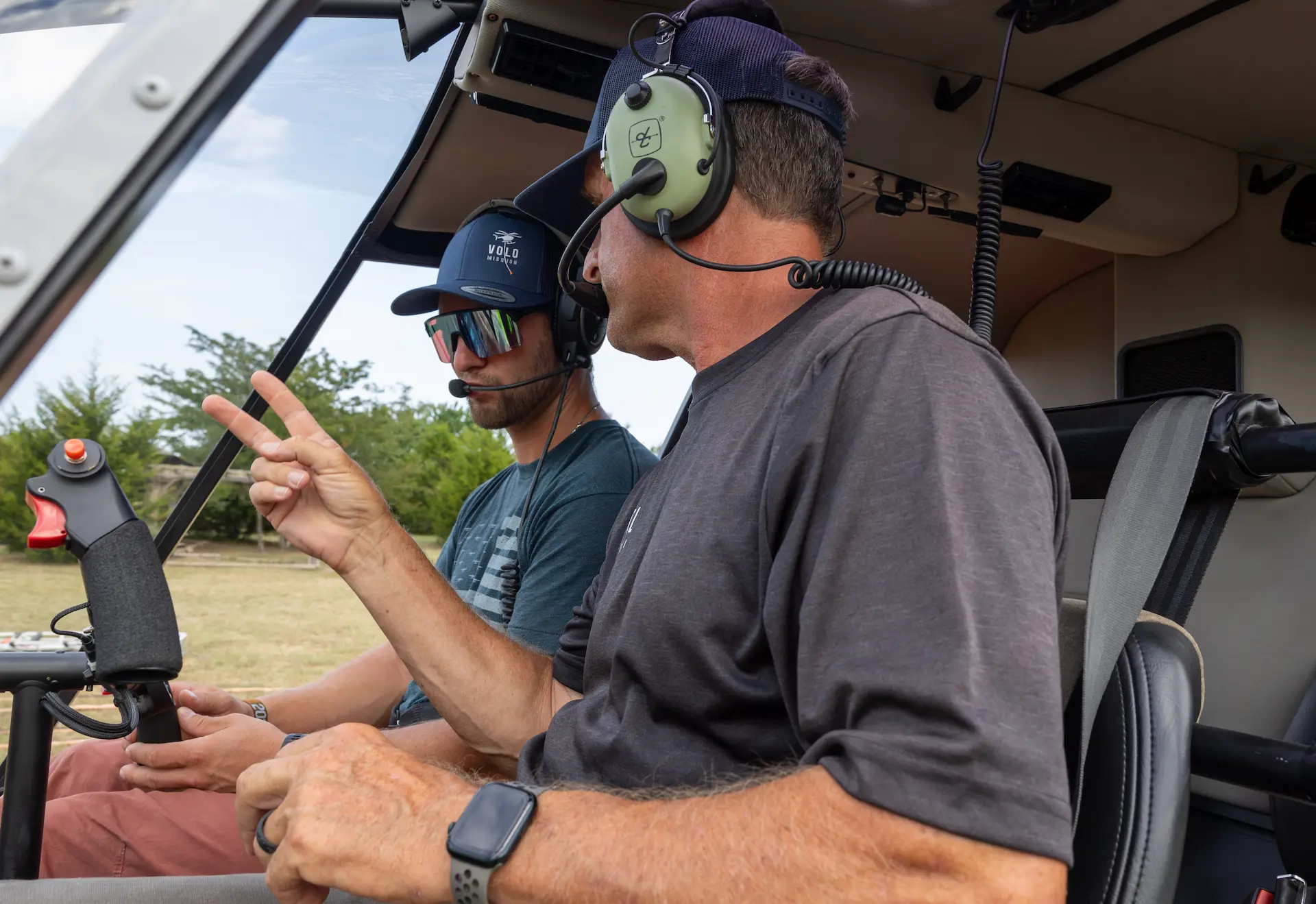
Each course is capped at just two students, a deliberate decision that ensures targeted training.
"We found that two students per course strikes the perfect balance," Andre shares. "It allows for enough one-on-one time while also giving students a chance to learn from observing their peers."
Kim adds, "The smaller class size creates a more intimate learning environment. Students feel comfortable asking questions, and we can address individual challenges more effectively."
Skill Development in Focus
Throughout the course, specific skills are emphasized to ensure comprehensive readiness:
- Hover Precision: Students learn to hover in tight spaces and under varying conditions, mastering the fine motor control needed for utility operations.
- External Load Dynamics: They practice handling sling loads of different weights and shapes, understanding how loads behave in flight and how to mitigate oscillations.
- Long-Line Operations: This skill requires managing extended lines, often over 100 feet, which demand heightened situational awareness and precise inputs.
- Emergency Procedures: Pilots train for unexpected scenarios, such as load failures or weather changes, ensuring they can respond decisively under pressure.
- Environmental Awareness: Instructors emphasize the importance of scanning the surroundings, communicating with ground crews, and maintaining safety margins in challenging conditions.
Bettis, sums up the program’s philosophy: "We’re not just teaching pilots to fly. We’re teaching them to think, adapt, and excel in one of the most demanding sectors of aviation."
The progression of skills and the personalized approach make the program highly effective. By the time students graduate, they’re not only competent but confident, equipped to take on the challenges of utility flying with precision and poise. This is a big factor for companies that regularly send their pilots there for advanced training. “When we started, nearly 80%-90% of our students were coming to our school on their own accord.” Kim explained. “Now, 10 years later, that has flipped and 80%-90% of our students are coming from the operators in the industry.”
Safety is Paramount
Safety isn’t just a checklist; it’s a mindset that permeates every aspect of training. Vertical reference and long-line operations often take place in challenging environments, where a single miscalculation can have severe consequences.
Pilots undergo simulations that mimic real-world scenarios, such as adjusting for changing wind conditions or compensating for the shifting weight of a heavy load. The instructors emphasize situational awareness, guiding pilots to assess every variable in the field, from weather patterns to the behavior of the load. These skills are crucial when dealing with unexpected challenges; as Bettis notes, “You don’t know what you’re going to get each time you take off. It’s different every time.”
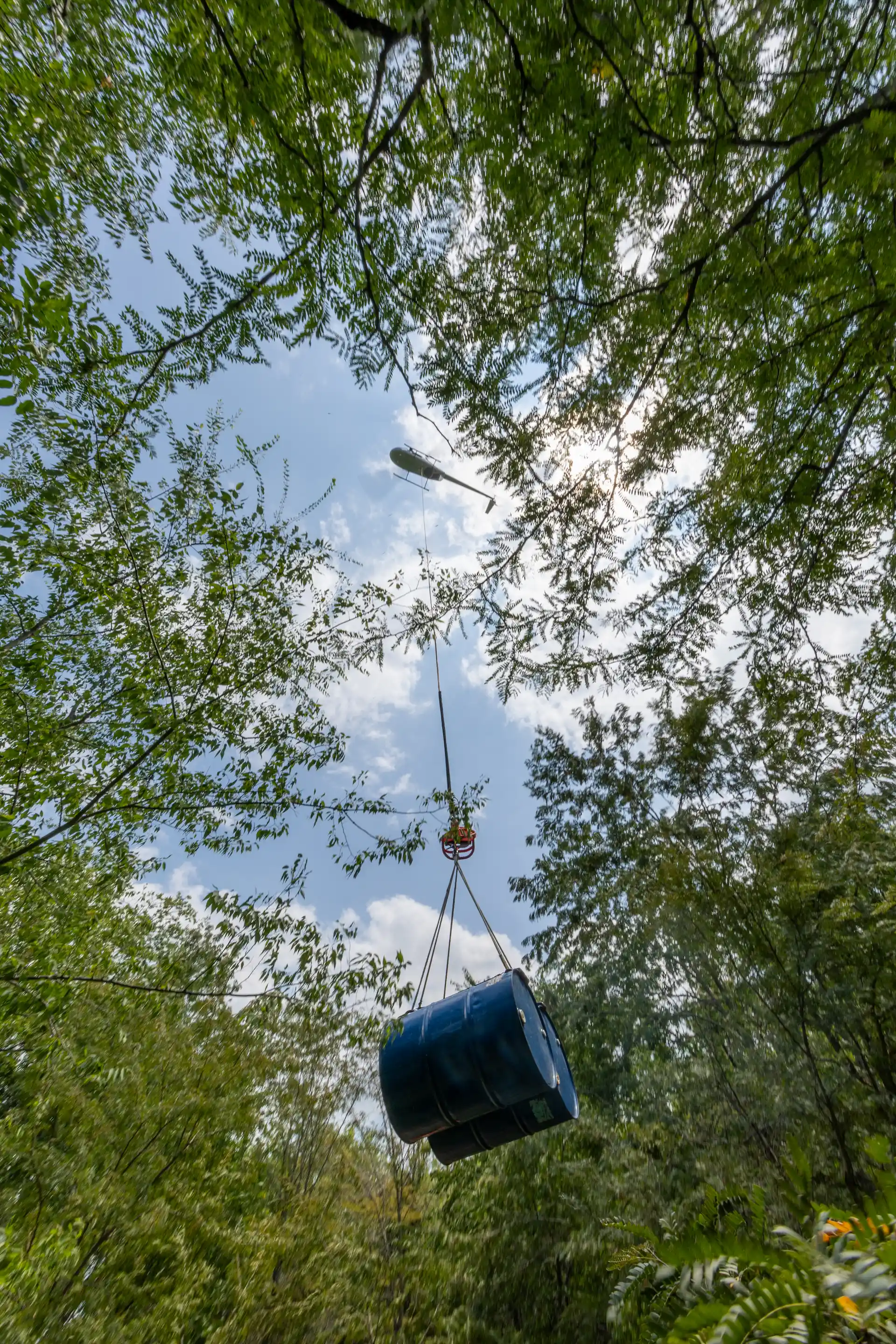
In addition to physical skills, the training builds mental resilience in its students. The training environment fosters a high level of focus, requiring pilots to stay calm and composed under pressure. This mental preparation is as essential as the technical training itself, equipping pilots to handle the intensity of utility operations with a clear head and steady hands.
The Psychological Edge: Building Resilience and Adaptability
Utility flying is a career that demands more than just technical proficiency. Utility Pilots face high-pressure situations, unpredictable conditions, and the constant imperative to prioritize safety; all while executing precise and demanding maneuvers. These psychological challenges are woven into the fabric of the training curriculum. This innovative approach is championed by Kim, whose dual qualifications as a pilot and aviation psychologist, bridges the gap between technical training and mental preparedness.
Her personal experience adds depth to her training initiatives. As one of the few women in utility aviation, Kim brings a unique perspective, mentoring students and encouraging them to persevere through challenges. Her understanding of the psychological demands of utility flying has become an integral part of the training philosophy.
Through practical tools and strategies, she helps students manage stress, build confidence, and maintain focus during complex operations. This psychological resilience not only enhances their performance but also reinforces the culture of safety and excellence that is defined by the program’s flight instructors.
Instructor Insights: The Teaching Philosophy
One of the defining aspects of the training is its cadre of seasoned instructors. Before cofounding Volo Mission with his wife, Andre logged thousands of hours flying Columbia Helicopters’ Chinooks and 107s on utility missions for over 27 years. Andre designed the technical side of the program to foster a challenging environment for pilots at every level. Teaching blends patience with precision, allowing students to make mistakes in a controlled setting and learn from those mistakes without jeopardizing safety.
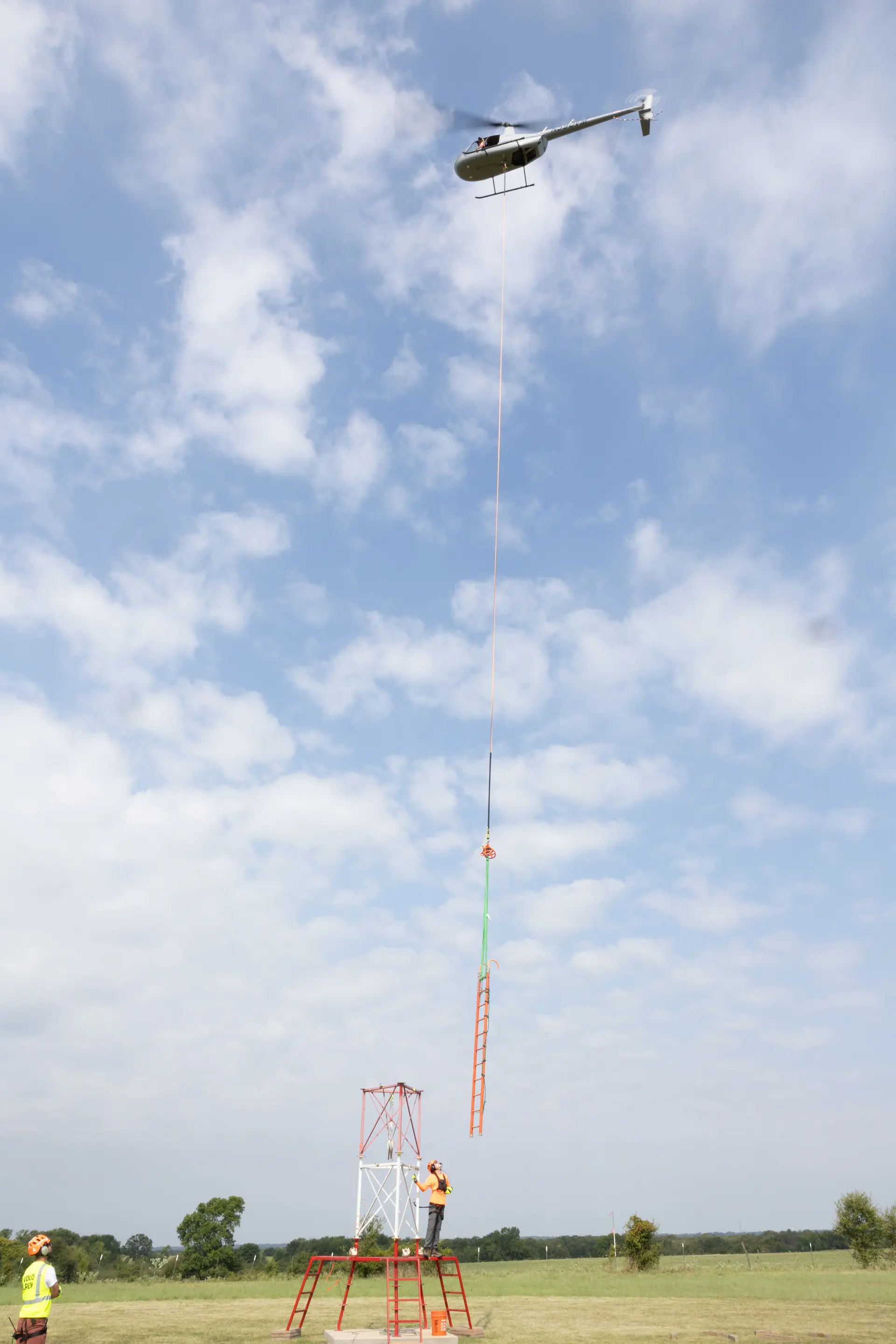
The company’s instructors break down complex maneuvers into manageable steps, building each pilot’s confidence as they progress. Bettis said that that this approach ensures that students understand not just how to complete a task but why each step matters. “Andre doesn’t just teach you the method; he teaches you the reasoning behind it.”
The Pilot’s Journey: Transforming Doubt into Mastery
For many pilots, their time at in the program can be as transformative as it is challenging. Bettis says that even experienced aviators find themselves rethinking their skills and approach as they tackle the complexities of vertical reference flying. He recalls the initial difficulty he faced, when learning to become a utility pilot, joking that even though he had 8000 hours of flight time, after ten hours on the course, he was ready to “turn in his pilot’s license and go work as a greeter at Walmart.” Yet, under Andre’s guidance, he persisted, eventually mastering the techniques and developing a completely renewed passion for aviation along the way.
This journey from struggle to success is a common theme, where pilots are encouraged to push through their initial frustration and keep refining their skills. The program builds a solid foundation, giving pilots the confidence to transition from training to real-world applications.
"Every flight is an opportunity to learn," Andre says. "Whether it’s a success or a challenge, there’s always something to take away. Our job is to instill that mindset in our students."
Graduates leave with more than just technical skills; they carry a mindset of excellence and continue on in their careers providing a lasting positive force in the industry.
Bettis emphasizing the long-term impact of the program, said, "Our goal is to produce pilots who don’t just meet industry standards—they set new ones. When our graduates step into a cockpit, they’re ready to handle whatever challenges come their way."
The company has also developed an initiative to bring more female pilots into utility flying with its annual “Ladies of Long Line” event.
Ladies of Long Line: Building a More Inclusive Utility Flying Community
“Ladies of Long Line” is an event created by Kim, aimed at increasing the presence of women in utility aviation. By offering mentorship and tailored training, the program supports and educates women, encouraging those that are interested to explore a rewarding future in utility flying.
Kim’s position as one of the few women in utility aviation also provides her with a platform to mentor and inspire students. Through her mentorship, she encourages all students, regardless of background, to persevere, develop their skills, and find confidence in their abilities.
"I’ve faced my share of challenges in this industry," she shares. "But those experiences have taught me resilience, and I want to pass that on to the next generation of pilots." She adds; "We’ve seen incredible growth among the women we’ve trained. They often excel in areas like precision and situational awareness, bringing unique strengths to the industry."
The Ladies of Long Line event has inspired other organizations to partner in recognizing and fostering the contributions of women in aviation and invest in shaping a utility industry that is more inclusive and equitable to all pilots.
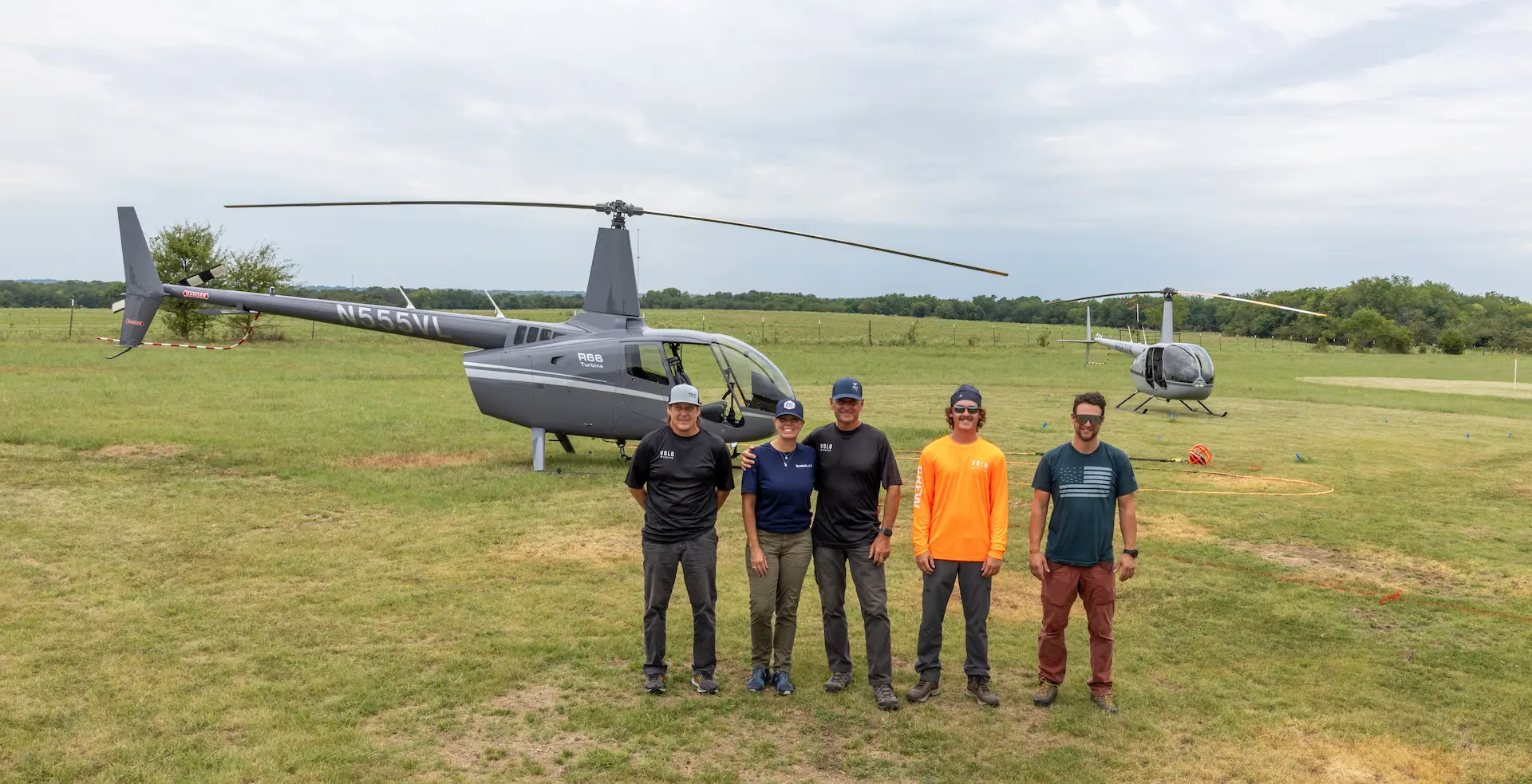
Looking Ahead: The Future of Utility Training
As the utility aviation industry evolves, so too does Volo Mission. The program is continually exploring opportunities to expand its curriculum ahead of industry trends and fulfill the advanced training needs of operators. Ensuring its graduates are prepared not just for today’s challenges but for the future of the industry as well.
Through its dedicated instructors, the company seeks to fill a critical industry need and redefine utility pilot training.
 HOME
HOME


